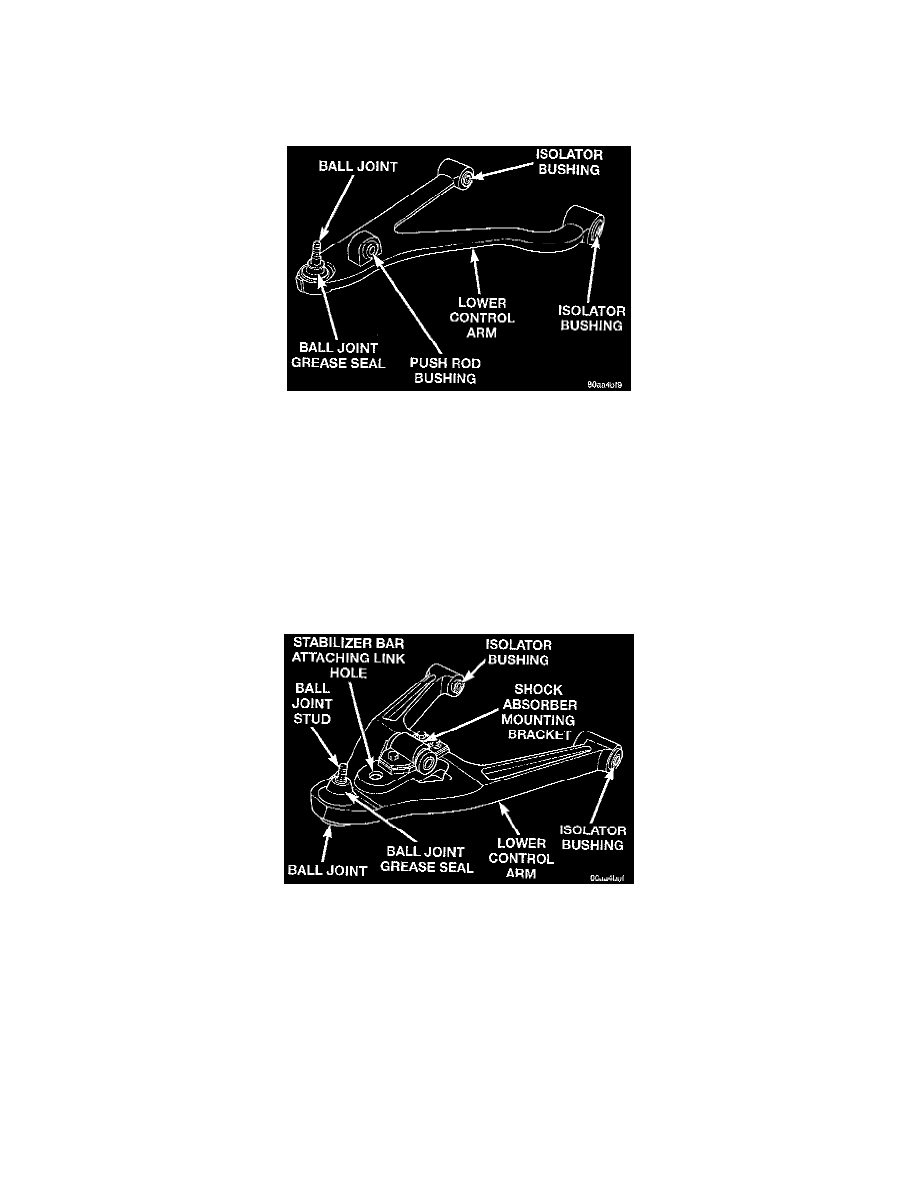Prowler V6-3.5L VIN G (1999)

Ball Joint: Description and Operation
Lower Ball Joint
Front Suspension
The lower ballpoint used on this vehicle is pressed into the lower control arm and uses a tapered stud for attachment of the ball joint to the steering
knuckle. The tapered stud of the ball joint is attached to the steering knuckle using a nut specially designed for this application The ball joint nut is
designed to draw the ball joint stud into the steering knuckle as the nut is threaded onto the ball joint stud. This is accomplished by the plastic skirt on the
bottom of the attaching nut. This keeps the ball joint stud from rotating when tightening and torquing the ball joint to steering knuckle attaching nut.
The seal boot used on this ball joint is not replaceable. If a torn seal boot is noticed when servicing the vehicle or the seal boot is torn during servicing of
the vehicle the lower control arm will need to be replaced.
Due to the lower control arm being made of aluminum and the ball joint being made of steel, (dissimilar metals) corrosion may occur between the pieces.
For this reason, the lower ball joint has a corrosion preventative coating applied to it.
Rear Suspension
The lower ball joint is pressed into the rear lower control arm and has a tapered stud for attachment of the ball joint to the knuckle. The tapered stud of
the ball joint is attached to the knuckle using a flat washer and lock nut.
Due to the knuckle being made of aluminum and the ball joint being made of steel, (dissimilar metals) galvanic corrosion can occur between the pieces.
For this reason, the ball joint and ball joint stud has a corrosion protective coating applied to it.
The ball joint is not a replaceable component of the lower control arm.
